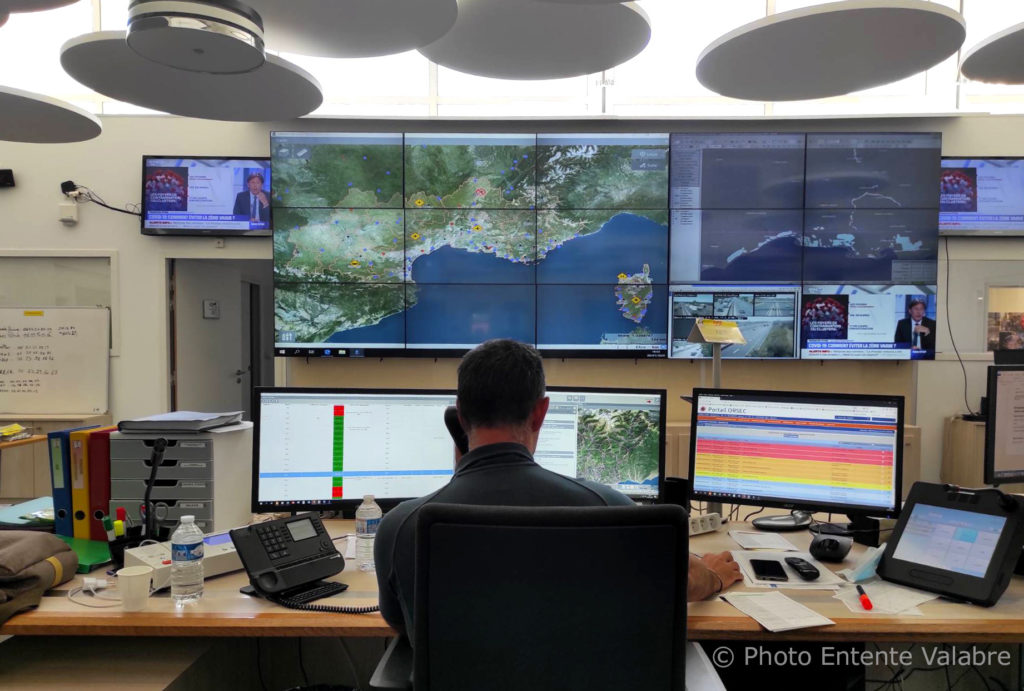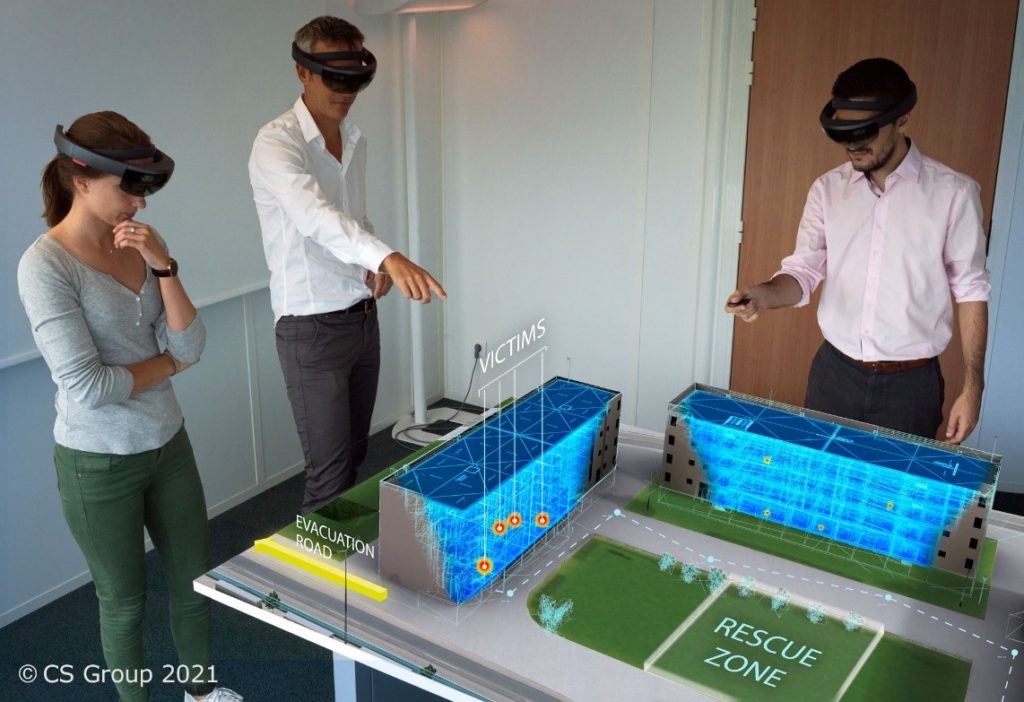On September 21, Toulouse commemorated the 20th anniversary of the AZF factory explosion, which caused 30 deaths and injured thousands. This industrial disaster, the largest in France since 1945, had a profound impact on the city, its inhabitants, and the first responders who intervened on site. Twenty years later, major innovations resulting from European research projects have revolutionized the response operations for this type of disaster and offered rescue teams a new arsenal of tools to aide operational decision making and response in an informed, coordinated, safe and efficient way.
Many challenges arise immediately after a natural or man-made disaster. First responders must make decisions in a hurry in the midst of a vast, complex, and hostile environment with many unknown and dangerous spaces to explore. Lack of reliable information and a high degree of uncertainty about the situation, as well as the nature and location of casualties and threats, are often serious impediments to a rapid and effective response.

It was the AZF disaster that motivated the launch of the CRIMSON R&D project, initiated and led by CS Group, a French company based in Toulouse, and co-funded by the European Commission backing the concept that new virtual reality technologies could help rescue services in managing such a disaster. This project created the eponymous software platform dedicated to protection and rescue services, which offers multi-dimensional hypervision capabilities in the form of a 3D digital twin of the crisis zone and all known information about the situation. This includes information about the developing incidents and operations underway for the protection of the environment and populations, and their rescue. Thanks to its highly visual nature, Crimson allows for collaborative, safe and efficient management of response operations.
It is adopted today by many SDIS (Departmental Fire and Rescue Services) in France and has proven its effectiveness in coordinating not only day-to-day operations, but also major, multi-hazard crises. These include, very recently, a factory fire at Aubert & Duval in Ariège and the Gonfaron mega-fire at the zone level in the Var, both in 2021, as well as the coordination of rescue operations during the Teil earthquake in 2018.
« As fate would have it, it was on the 20th anniversary of this tragedy that Crimson, which was designed to help the emergency services following the AZF disaster, was adopted and deployed at SDIS31 by those who were the first to intervene in the disaster.» notes Olivier Balet, Technical Director of the CS GROUP, who initiated the CRIMSON project.
Responders recognize the value of the tool. CCrimson has the potential to change the way we manage disasters, or incidents on a daily basis, by allowing the various parties involved to share a precise 3D common operational picture of the situation and to conduct operations more efficiently » says Lieutenant-Colonel Ghiani, from SDIS31 in Toulouse
Crimson has been adapted over the years within additional research projects that aims to revolutionize tools available to emergency services to carry out their missions in the most perilous situations.
INTREPID brings together a consortium of 17 partners from 7 European countries over a 3-year period. Technical, scientific, legal, and communication experts, as well as first responders, such as the elite corps of the Marseille Fire Brigade, the Belgian Police Special Units, the Stockholm Fire Brigade, and the Madrid police and emergency services, are all involved in this highly user-centric project. Initiated and coordinated by CS Group, INTREPID also enables Inconito, another Toulouse-based company, to invent the user experience of tomorrow's Crimson. The results of INTREPID will be demonstrated and evaluated during three pilot demonstrations in realistic, challenging crisis situations. The first opportunity will be in November 2021, during a simulated flooding event in a Stockholm subway station.
Launched at the end of 2020, the new European H2020 project INTREPID explores for instance new solutions to secure the intervention of first responders as soon as they arrive on an industrial site, or when they enter infrastructure and buildings. INTREPID is developing new capabilities for Crimson based on cutting-edge technologies such as artificial intelligence, augmented reality, digital twins, as well as next-generation cyber assistants, micro-drones and intelligent robots. The goal: revolutionize rescue operations, especially inside infrastructures, and enable first responders to intervene and detect immediately victims and threats without having to wait for specialized reconnaissance teams or complete security of the area.

INTREPID brings together a consortium of 17 partners from 7 European countries over a 3-year period. Technical, scientific, legal, and communication experts, as well as first responders, such as the elite corps of the Marseille Fire Brigade, the Belgian Police Special Units, the Stockholm Fire Brigade, and the Madrid police and emergency services, are all involved in this highly user-centric project. Initiated and coordinated by CS Group, INTREPID also enables Inconito, another Toulouse-based company, to invent the user experience of tomorrow's Crimson. The results of INTREPID will be demonstrated and evaluated during three pilot demonstrations in realistic, challenging crisis situations. The first opportunity will be in November 2021, during a simulated flooding event in a Stockholm subway station.
Interview with lieutenant-colonel Ghiani – 15/09/2021
Lieutenant-Colonel Christophe Ghiani, a firefighter on duty on the day of the AZF explosion, presents his vision on the decisive role of assistance and safety tools in the first moments of such interventions.
What do you think of the European Commission's initiative to fund research and development of new solutions for first responders? What do you expect from it?
We know that R&D is expensive. I think that the contribution to civil security and rescue in general is very much related to the financing of structuring projects that Europe can provide. So, it is always interesting to benefit from European funds that are actually dedicated to rescue and emergency.
What progress do you see in an innovative solution like Crimson, which is the result of an R&D project co-financed by the European Commission and the Toulouse-based industrial company CS Group, in the management of protection and rescue operations for populations?
« Crimson has the potential to change the way we manage disasters and incidents on a daily basis, by enabling the various parties involved to share a precise 3D view of the situation and to conduct operations more efficiently. »
Would you be ready to use more new technologies, digital tools in your interventions? artificial intelligence, robotic assistants, etc.
I tend to say that we have to be open to all options, so artificial intelligence, Deep Learning, are all part of the new technologies. If we want to provide quality assistance, especially in the case of a disaster, we must be attentive and constantly on the lookout for new technologies that can help us. So, I think that if tomorrow this artificial intelligence can allow us to be one step ahead and to win in the anticipation of this type of situation, it will be a significant added value.
Would you be willing to trust in artificial intelligence?
Of course! Especially when, before using it in an intervention, we have been able to test it during exercises and simulations. In this respect, I think that today it would not occur to us to question proven communication vectors that we now use on a recurring basis. I think that we need to acculturate ourselves on these new technologies, to demonstrate their performances and that, as such, there is no reason not to use them. Throughout our career, we are led to integrate new technologies into our operations and this generally goes very well.
Have you ever used robots or drones to scan the terrain etc.?
We have been using drones for a few years now within SDIS31, but we are not yet using them for real-time 3D scanning. We do real-time mapping. On the other hand, we are currently looking for innovative solutions, mainly for indoor geolocation, which will enable us to locate our teams in rubble, in long and difficult reconnaissance operations, and everything related to the medical biometrics of our carriers, in order to have an overview of their state of tiredness, their stress, and their general health.
Contacts communication Inconito : Thiphaine Guyomard –
Contacts communication CS GROUP :




